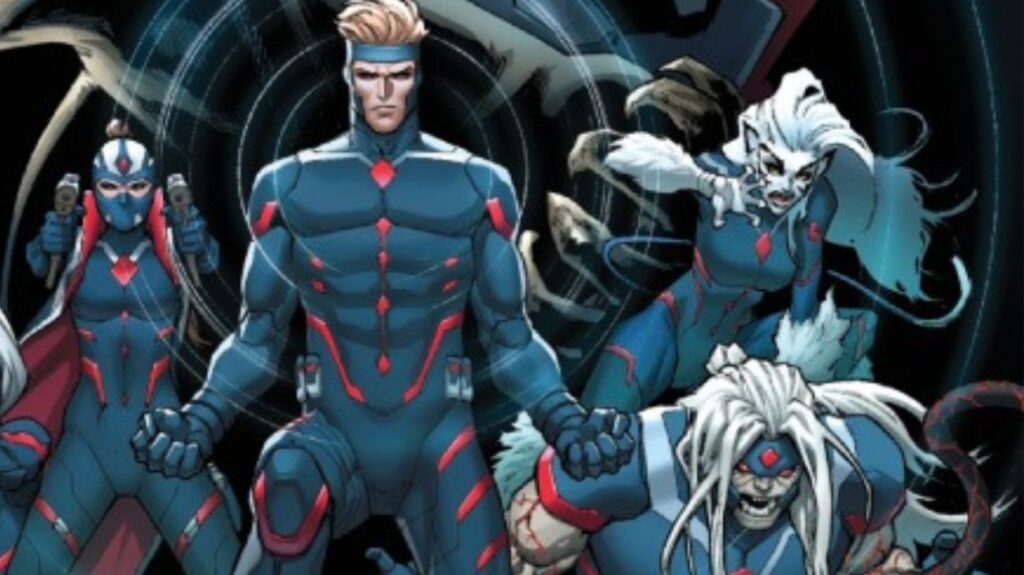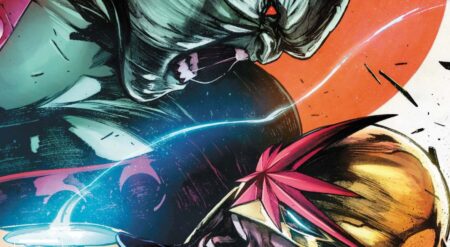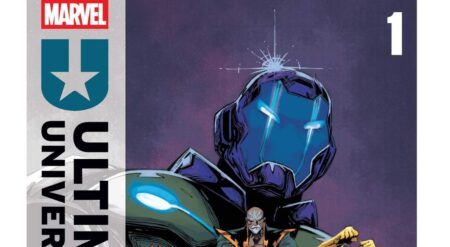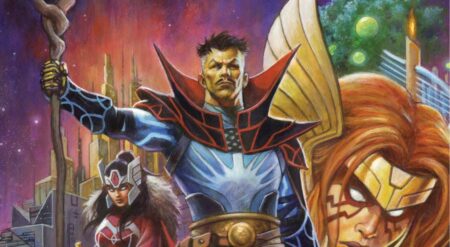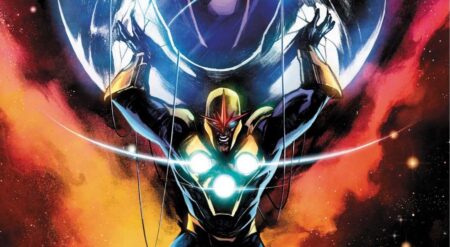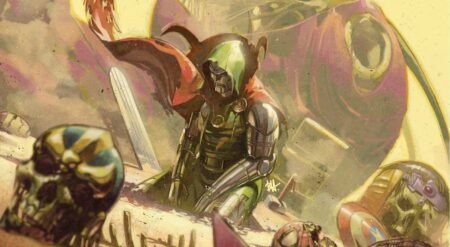Sinister’s Six Issue 1 is published by Marvel Comics and written by David Marquez, art by Rafael Loureiro, colors by Alex Sinclair, and letters by Ariana Maher.
This is part of the Age of Revelation crossover, exploring a dystopian future where a virus spread across the United States, turning some into mutants and killing the rest. Ten years after the X-Virus changed the world, Mister Sinister has created a team of mutants, forced to do his bidding and hunt down his following test subjects.
The most surprising aspect about Sinister’s Six Issue 1 is that Marquez is writing it, not illustrating. Most famous for his incredible art, Marquez displays a remarkable aptitude for scripts. The story is instantly engrossing, with the first targets immediately under attack. There is a mixture of characters from the X-Men and those from other corners of the Marvel Universe.
But since the release of the X-Virus, those figures now have mutant powers of their own. It leads to unpredictability, as martial artists and street-level heroes now exhibit powers of their own. The issue sets adrenaline pumping with a violent fight at the start, moving rapidly and with severe danger around every corner. Nothing is ever what it seems, as the actual targets make themselves known. The fight keeps going, evolving, and revealing new characters.
The story then transitions to Sinister’s base, revealing why many of the members are forced to align themselves with the monster geneticist. Sinister may offer protection, but it comes at a price, and he holds all of the cards. The pace slows down in the latter stages of the issue, with more exposition. Marquez brilliantly explains this part of the Revelation Territories, pitting two dangerous villains against each other.
The cast is large inside Sinister’s Six Issue 1. The focus is on the six foot soldiers of Mister Sinister, forced to do his bidding. It’s a mixture of villains and desperate heroes. Omega Red is a bloodthirsty monster, whilst a mutated Black Cat seems to have developed a desire to hunt. Lady Fantomex and Domino are mercenaries, whilst Havok has joined to protect someone else.
The dialogue is distinct and interesting, drawing out the personality and friction within the group. Some are fine with the arrangement, whilst others are more begrudging. The targets are brilliant inclusions, because you never usually see them in X-Men titles. There are unspoken histories, as each character has been changed and forced to fight since the devastation of the X-Virus.
At the head of the table is Nathaniel Essex, aka Mister Sinister – a big, nefarious personality. He enjoys manipulating people and their bodies. If people owe him or rely on him, he revels in that power with an insidious glee. And as the issue progresses, it’s clear that he hates not knowing everything, especially about the X Virus. There is another, bigger figure in this crossover that is better than him, and Sinister doesn’t like that.
The art features magnificent redesigns for many of the characters. There is both uniformity and individuality. The members of the Six have the iconography of Mister Sinister all over them, especially that signature diamond. But they’ve still got identifying features, with whips and long ponytails galore. Black Cat has the best design in Sinister’s Six Issue 1. She has been entirely changed by the virus, given powers, and turned into something resembling her namesake. She’s got fur, claws, and a complete alteration of her facial features.
Loureiro phenomenally illustrates the fight scene. There is so much going on. Like the Six, the targets are recognizable, but they bring abilities to the table. It means there’s an explosion of movement and violence, an outbreak of chaos in the forest. There are natural weapons, superpowers, and guns, sending figures sprawling. And away from the danger is an unchanged Mister Sinister, safe and sound in his palace of grandeur and opulence.
The colors are where the uniformity comes into use again. The team members all stick to the same color palette, mimicking Sinister’s red and blue. The white of Black Cat‘s fur and hair, as well as Domino’s eye, complements that color. This selection of tones looks unnatural among the greens of the forest, interfering with the world that Revelation created. The lettering can be scattered during the fight scenes, but the text itself is straightforward to read.
Sinister’s Six Issue 1 is a wicked writing debut. This issue is not an easy concept to write, and yet David Marquez executes it comfortably and convincingly. It’s a busy comic, with so many characters exploding onto the page all at once. And yet their personalities and agendas shine through rapidly.
There’s terrific world-building without being overly obvious or revealing too much. The fight scenes are enthralling, and the sense of oncoming danger gets established quickly. The issue has multiple threads and incredible depth, placing Sinister in a precarious position in this quest for supremacy.
Sinister’s Six Issue 1 is available where comics are sold.
Sinister's Six Issue 1
TL;DR
Sinister’s Six Issue 1 is a wicked writing debut. This issue is not an easy concept to write, and yet David Marquez executes it comfortably and convincingly.

